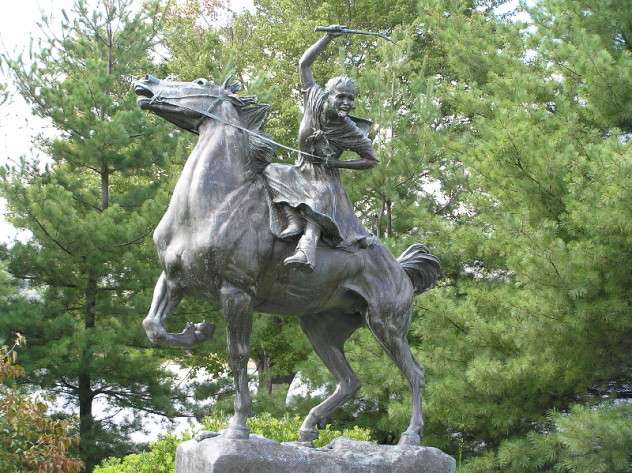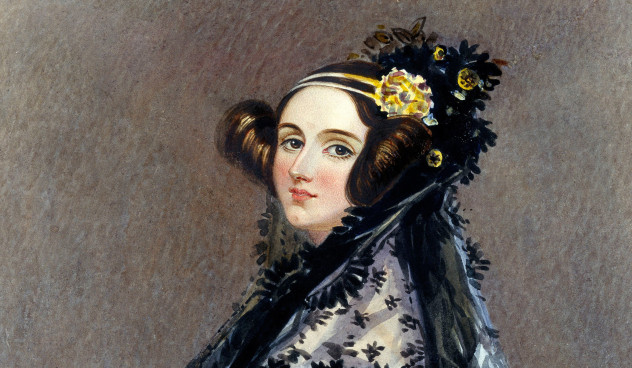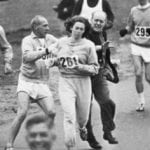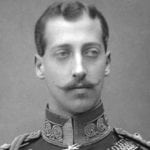 Animals
Animals  Animals
Animals  Facts
Facts Ten Unexpectedly Fascinating Facts About Rain
 Crime
Crime 10 Dark Details of Australia’s Gruesome Unsolved Wanda Murders
 Humans
Humans 10 Unsung Figures Behind Some of History’s Most Famous Journeys
 Animals
Animals 10 Species That Refused to Go Extinct
 Weird Stuff
Weird Stuff 10 Weird Things People Used to Do at New Year’s
 Our World
Our World 10 Archaeological Discoveries of 2025 That Refined History
 Weird Stuff
Weird Stuff 10 Fascinating Facts You Might Not Know About Snow
 Miscellaneous
Miscellaneous Top 10 Things Crypto Was Supposed to Change & What Actually Did
 History
History 10 Huge Historical Events That Happened on Christmas Eve
 Animals
Animals 10 Strange Times When Species Evolved Backward
 Facts
Facts Ten Unexpectedly Fascinating Facts About Rain
 Crime
Crime 10 Dark Details of Australia’s Gruesome Unsolved Wanda Murders
Who's Behind Listverse?

Jamie Frater
Head Editor
Jamie founded Listverse due to an insatiable desire to share fascinating, obscure, and bizarre facts. He has been a guest speaker on numerous national radio and television stations and is a five time published author.
More About Us Humans
Humans 10 Unsung Figures Behind Some of History’s Most Famous Journeys
 Animals
Animals 10 Species That Refused to Go Extinct
 Weird Stuff
Weird Stuff 10 Weird Things People Used to Do at New Year’s
 Our World
Our World 10 Archaeological Discoveries of 2025 That Refined History
 Weird Stuff
Weird Stuff 10 Fascinating Facts You Might Not Know About Snow
 Miscellaneous
Miscellaneous Top 10 Things Crypto Was Supposed to Change & What Actually Did
 History
History 10 Huge Historical Events That Happened on Christmas Eve
10 Overlooked Women Who Outdid Famous Men
There is a lot to say about ingrained prejudice regarding the roles of men and women in our society. But it’s certain that sexism and misogyny were even more common in the past, meaning that one gender’s contribution to history has often been diminished or overlooked. From historical figures to pop idols, women have been outdoing their male counterparts for centuries, while rarely getting any acknowledgement for their accomplishments.
10Paul Revere vs. Sybil Ludington

Paul Revere is one of the most beloved heroes of the American Revolution, famous for riding his horse from place to place warning people about the arrival of British soldiers before the battles of Lexington and Concord. He didn’t quite complete his mission, since the British arrested him shortly after he left Lexington. However, his young companion, Samuel Prescott, managed to escape and make it all the way to Concord. Which was incredibly important, but still not as impressive as what Sybil Ludington did two years later.
Ludington was just 16 years old when she heard that the British were attacking the nearby town of Danbury. With no time to lose, she saddled up her horse and rode off into the night to gather the local militia. Racing from farm to farm, she rapped on the doors with a long stick, allowing her to rouse the occupants without dismounting. She refused all offers of rest or refreshments, riding off into the pitch darkness as soon as possible.
All in all, Ludington rode some 65 kilometers (40 mi) that night, making her midnight ride twice as long as Revere’s. Additionally, she wasn’t captured, but successfully gathered 400 militiamen, who eventually engaged the British at Ridgefield. Her achievement was so impressive that George Washington personally thanked her and she continued to serve as a messenger throughout the war.
9Blackbeard vs. Sayyida Al-Hurra

Despite his career as a pirate captain lasting less than a year, Blackbeard is now considered the most infamous buccaneer in history. Operating from a base in the Bahamas, Blackbeard (or, to give him his real name, Edward Teach) terrorized the Caribbean with seeming impunity, before dying dramatically in hand-to-hand combat with pirate-hunters sent to take him down. But he lived on in legends and literature, providing the template for the fierce pirates of popular fiction.
Much less has been written about the life of Sayyida al-Hurra, “the Pirate Queen,” even though she was undoubtedly a much more powerful and significant figure than Blackbeard (who never controlled more than two ships and a few hundred pirates). As a child, Sayyida’s family was forced to flee Spain when the Muslim kingdom of Granada was conquered by Ferdinand and Isabella. Establishing herself in Morocco, Sayyida rose to become ruler of the city of Tetouan, which she turned into a hub for pirate raids against Christian Spain and Portugal. Among her key achievements was establishing an alliance with the Ottoman pirate Barbarossa, who ruled Algiers. Barbarossa’s pirates controlled the eastern seas, while Sayyida dominated the west. Her ships launched countless raids on Spain, ransoming wealthy captives and selling the rest into slavery.
In 1541, she married the Sultan of Morocco, who had long courted her from his court in Fez. The Sultan even left the capital and came to Tetouan for the wedding, which was considered unprecedented in Moroccan history. Sayyida continued to rule Tetouan until she was deposed by her son-in-law, ending her 30-year reign of terror.
8Babe Ruth vs. Jackie Mitchell
Jackie Mitchell became one of the first professional female baseball players when she sensationally signed for the minor league Chattanooga Lookouts in 1931. Mitchell’s career playing alongside the men on the team didn’t last long—her contract was voided after a few days, probably at the instigation of baseball commissioner Kenesaw Mountain Landis, who labeled women playing baseball a disgraceful “burlesque”—but she still made history by striking out two of the greatest players in history on the same day.
In April 1931, the Lookouts were booked to play an exhibition game against the New York Yankees, including the legendary Babe Ruth. The press were intrigued at the prospect of the Bambino going up against a female pitcher but were predictably dismissive of Jackie, making comments like “the curves won’t be all on the ball” and “she has a swell change of pace and swings a mean lipstick.” But when game day came, Jackie surprised everyone by striking Babe out, prompting the legendary hitter to hurl his bat to the ground in disgust. As if that wasn’t enough, Jackie next faced down Babe’s equally legendary teammate: Lou Gehrig. She struck him out as well.
Nobody can question that Jackie struck out two of the greatest players in baseball history. But the sheer scale of her achievement was such that many have questioned whether Ruth and Gehrig didn’t deliberately allow themselves to be struck out as a publicity stunt. For what it’s worth, neither man ever said so, even though it would have allowed them to save face. Other Yankees players have insisted that there was no official plan to let Jackie get her strikes, although they can’t rule out Ruth and Gehrig agreeing a plan between themselves and not telling their teammates. Jackie, who went on to tour with the famed House of David religious baseball teams, rejected the idea, proudly stating that “they were trying, damn right. Hell, better hitters than them couldn’t hit me. Why should they’ve been any different?”
7Jocelyn Bell Burnell vs. Anthony Hewish
In 1967, Jocelyn Bell Burnell was a postgraduate student at the University of Cambridge when she became the first scientist to confirm the existence of Little Green Men. Well, sort of. Using a telescope she had helped build, Burnell was monitoring signals emitted by distant quasars when she discovered a number of mysterious, regular radio pulses. She reported the discovery to her adviser, Anthony Hewish, and they formed a team to investigate the pulses, which they jokingly dubbed LGM (“Little Green Men”) because aliens were the best explanation they could come up with at the time.
The team eventually realized the pulses were emitted from a previously undiscovered type of rotating neutron star, which came to be known as pulsars. This was a huge breakthrough in astrophysics, and Anthony Hewish and Martin Ryle received the Nobel Prize in Physics for it. But the Nobel committee didn’t see fit to similarly honor Bell, even though she was the first person to detect pulsars and played a key role in confirming their existence. Her omission caused a huge controversy, with prominent astronomers like Sir Fred Hoyle slamming the decision in the media.
For her part, Bell declined to cause a fuss, saying that she was simply glad to have played a part in the first Nobel awarded for astrophysics. She later added that she thought her omission had more to do with her student status than her gender, although she added that she was more concerned at the time with trying to continue her career after the birth of her first child, which was considered very unusual in the ’70s.
6F. Scott Fitzgerald vs. Zelda Fitzgerald

Married couples are supposed to support each other, but the famous writer F. Scott Fitzgerald was actually equally famous in his lifetime for stealing—sorry, “drawing inspiration”—from his wife, Zelda. Scott would even carry bits of paper to write down clever things his wife said for use in his books. He also directly stole a passage from her journal to use in one of his books.
To make matters worse, their relationship was not a happy one. Scott demanded fidelity from Zelda while having frequent affairs himself. He even had the gall to invite his mistress and her mother to visit them. He would compare them often, mocking Zelda’s lack of drive while refusing to allow her to pursue any of her passions. When a publisher offered to print Zelda’s journals, an outraged Scott blocked the deal. Even while he was pilfering his wife’s work, he took care to portray her as insane to family friends, apparently so that they wouldn’t believe her if she said anything. A passage in his diary indicates that he actually tried to push her toward a nervous breakdown.
That wasn’t quite enough to stop Zelda from saying anything. She even wrote a review of one of his books that quipped “Mr. Fitzgerald—I believe that is how he spells his name—seems to believe that plagiarism begins at home.” But Scott would ultimately be remembered as one of the great American novelists, while the brilliant Zelda remains more obscure.
5Rosalind Franklin vs. Maurice Wilkins
In 1951, Rosalind Franklin was a researcher in chemistry at King’s College London when she used X-ray diffraction to take astonishingly clear images of DNA fibers. The images were created using techniques that Franklin had pioneered and were absolutely crucial in determining the structure of DNA. Unfortunately, Franklin had an extremely strained relationship with her colleague Maurice Wilkins, which often veered into mutual dislike. In 1953, Wilkins secretly showed one of Franklin’s images to James Watson and Francis Crick, who were flabbergasted and subsequently used the image to develop their famous model of DNA.
The breakthrough was announced in the journal Nature, which featured articles from Crick and Watson, Wilkins, and Franklin. However, Franklin’s article was carried last and didn’t reveal the impact of her work on Crick and Watson (it’s possible she didn’t yet know Wilkins had shown them the image). Franklin never bore a grudge against Crick and Watson (she subsequently became good friends with Crick), but the incident didn’t help her relationship with Wilkins and she eventually left King’s College for Birkbeck College, where she did pioneering work on the structure of RNA.
Crick, Watson, and Wilkins shared the Nobel Prize for Medicine in 1962. Sadly, Franklin had died of ovarian cancer in 1958, when she was just 37 years old. The Nobel Committee does not give posthumous awards.
4Yoko Ono vs. John Lennon
Before everyone starts hurling their computers into trash compactors in outrage, let’s clarify that we’re not talking about their music. Obviously, which composer is better isn’t really quantifiable, but it’s fair to say that public opinion considers John Lennon one of the greatest musicians of the modern era, whereas Yoko’s music has often been compared to the sound of a computer being hurled into a trash compactor.
But when it comes to their activism, it’s clear that Yoko had more influence on John than vice versa. Seven years older than her husband, Yoko had strong memories of the Second World War and the surge of pacifist thinking that emerged in Japan during the 1950s in response. As a result, Yoko was drawn to the Dadaist movement, which sought to shock the world into realizing the futility of war through bizarre and unusual art. This pacifist background was behind some of the couple’s most famous stunts, including the “bed-in for peace” and their sponsorship of billboards reading “War Is Over! If You Want It.”
Yoko was always more political than John and her activism provided Lennon with a sense of purpose as he became bored and disillusioned with the Beatles. She deserves more than to be the butt of jokes for everyone who was angry that her marriage “broke up the Beatles.”
3Elizabeth Magie vs. Charles Darrow

The range of ignored women in history is pretty wide—it even includes the riveting world of board game creators. Take the case of Charles Darrow and Elizabeth Magie, who between them made the history of one of the most popular board games rather complicated. Elizabeth Magie was an American stenographer and journalist who filed a patent for her “Landlord’s Game” in 1903, some 30 years before Charles Darrow filed his own patent for the game known as “Monopoly.”
Magie intended her game as a teaching tool for the progressive economic theories of Henry George, who believed that people should own what they created, but that natural resources like land should be held in common. To this end, her game came with two sets of rules—one which rewarded all players for the creation of wealth, and a “monopolist” version in which the goal was to take all the other players’ money. It also included such familiar features as fake money and the “Go To Jail” space.
Magie’s game quickly became popular among college students and Quakers but failed to find widespread popularity. Years later, a salesman named Charles Darrow found himself unemployed and broke in the depths of the Great Depression. Darrow was familiar with Magie’s game and decided to modify it and resell it to Parker Brothers. Realizing they had a potential hit on their hands, Parker Brothers contacted Magie and arranged to buy her patent for a small fee.
Delighted, Magie wrote to George Parker expressing her hopes that the game would be a success and suggesting two further games the company might be interested in. Sadly, her optimism was crushed by the Parkers, who ignored her and began pushing a dramatic story of Darrow saving his family from poverty by inventing the game from scratch. Heartbroken, Magie arranged an interview with the Washington Post, in which she slammed the Parkers and demonstrated her claim to the game. But her story failed to catch the popular imagination and she was largely forgotten until a lawsuit in the 1970s unearthed her role in one of history’s most successful board games.
2Ada Lovelace vs. Charles Babbage

Ada Lovelace didn’t intend to be the first computer programmer. In fact, she most likely didn’t even fully realize what she had done until it was complete. Lovelace was the daughter of the notorious poet Lord Byron, and her mother encouraged her to pursue mathematics in the belief that it would counteract any poetic leanings inherited from her father. As a young adult, she became a good friend of Charles Babbage, inventor of the first programmable computer. In 1842, Babbage asked her to translate an Italian lecture on the subject of his Analytical Engine. Lovelace spent nine months working ceaselessly on the translation and added extensive notes, which were three times as long as the actual lecture, and which cemented her reputation as the mother of computer programming.
Of course, nobody would question Babbage’s huge breakthrough in conceiving the computer, yet it’s plain that Lovelace had a clearer understanding of the potential implications of the breakthrough. Babbage had conceived his computers as tools for mathematical calculations, but Lovelace was the first to realize that computers could process any data representable by numbers, foreshadowing modern computing. She also wrote an algorithm for the Analytical Engine, which is now considered the first computer program. Sadly, Lovelace died at a young age, while Babbage was frustrated in his attempts to build his engines, setting the science of computing back decades.
1Every Male Journalist vs. Anne Royall

In a time when female journalists weren’t taken seriously, a hero arose and changed everything, in the most hilarious way she possibly could. Credited as one of the first female journalists, Anne Royall started her own Washington newspaper in 1831, when she was already 62 years old. She soon gained a reputation as a tireless critic of corruption and bad government, unmasking a crooked official in the House of Representatives. In fact, during her earlier career as a travel writer, Anne was such a pain to the authorities that an ancient law was unearthed and she was prosecuted as a “common scold.”
But Anne’s finest hour came when she came across president John Quincy Adams swimming nude in the Potomac. It’s now well known that President Adams preferred an invigorating morning skinny dip, but it quite took Anne by surprise at the time. Nonetheless, a possibly apocryphal story claims that she quickly seized the initiative by sitting down on the president’s clothes and refusing to budge until he consented to an interview. However it came about, it’s known that Anne did become the first female reporter to interview a sitting president. And her knack for speaking to the highest officials didn’t end there—Anne eventually published interviews with every sitting president from Quincy Adams to Franklin Pierce. She even interviewed Abraham Lincoln, although he was just a humble congressman at the time.








